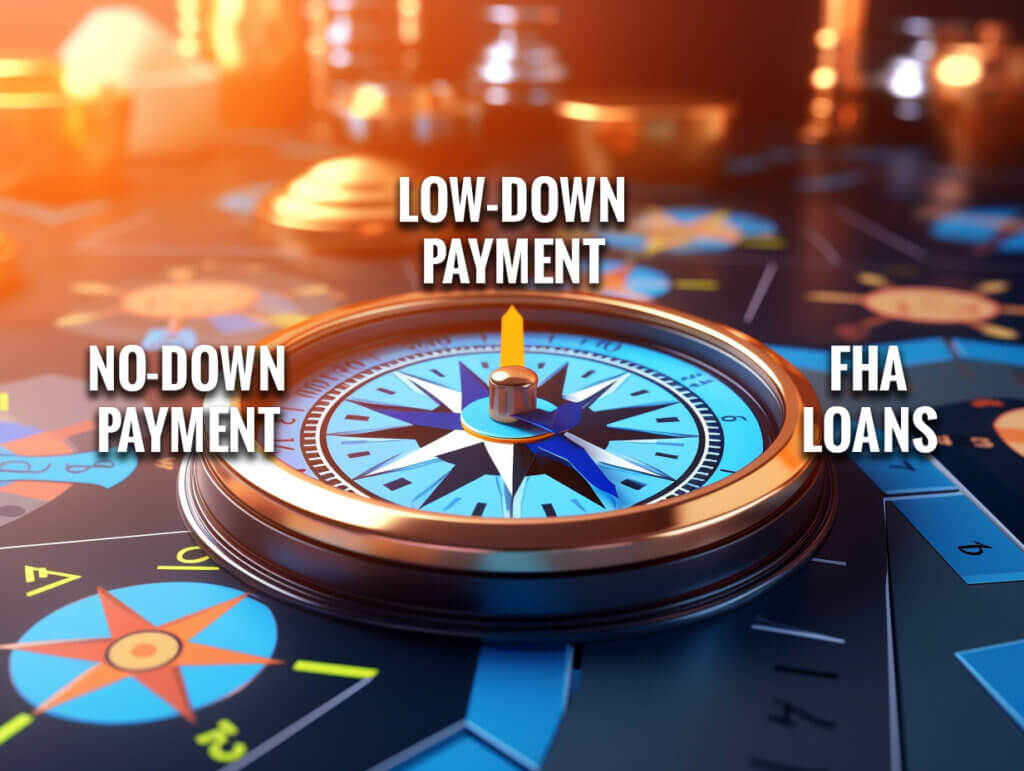- Blogs
- /
- How Much to Save for Down Payment on House: 3 Tips and Strategies
How Much to Save for Down Payment on House: 3 Tips and Strategies

Summary
Becoming a homeowner is filled with choices, desires, and financial considerations. The crucial question at the center of this endeavor is how much to save for down payment on house.
Putting money down for a down payment is more than just building up a large sum. It’s a calculated financial move that shapes monthly payments and mortgage conditions. It’s also the key to your future house.
Figuring out the right down payment requires balancing several factors. These include lifestyle choices, job stability, housing market specifics, and current financial obligations.
The decision-making process may be complicated. You need a good understanding of all the available options and ways to save money. But do not be alarmed! This article serves as your road map through the complex world of down payment savings.
Key Takeaways
- When saving for a down payment on a house, you should evaluate your financial capabilities, considering monthly savings without jeopardizing other financial obligations.
- Also, balance affordability and long-term financial stability when deciding on a down payment amount.
- Different down payment amounts have varied effects. They affect monthly payments, interest rates, savings, and immediate equity in the property.
- A 20% down payment typically reduces monthly mortgage payments and lower interest rates. It also eliminates the need for Private Mortgage Insurance (PMI) and the immediate building of equity. It gives ownership of the property from day one.
- Down payment percentages vary by region. They can also differ for first-time buyers compared to repeat buyers.
- Loans with lower down payment options (3-5%) make homeownership accessible. But, they may have higher interest rates and require private mortgage insurance (PMI).
- Programs like VA or USDA loans eliminate the need for a down payment. Yet, they have specific eligibility criteria and associated costs.
- Programs like FHA loans and grants are tailored to assist first-time buyers. They offer better terms or reduced initial investment.
Understanding Down Payments

Determining Ideal Amount
There are several factors to consider. First, assessing your financial situation and goals is crucial. Consider how much you can save each month. Ensure it doesn’t compromise your other financial obligations. It’s essential to balance affordability with long-term financial stability.
Another factor to consider is the potential benefits and drawbacks of different down payment amounts. For instance, a higher down payment may lower your monthly mortgage payments and interest rates.
But, it could tie up a significant part of your savings. On the other hand, a lower down payment might make homeownership more accessible. Still, it could lead to higher monthly costs. This is due to private mortgage insurance (PMI) or less immediate equity in the property.
For example:
- If you aim for long-term financial security, prioritizing a larger down payment might be beneficial.
- On the other hand, a smaller down payment might be more suitable if you focus on getting into homeownership sooner rather than later.
Advantages of 20% Down
Putting 20% down on the house offers several advantages. It can positively impact your home-buying experience. First, it results in lower monthly mortgage payments. It also leads to reduced interest rates over time. By putting 20% down on the property’s purchase price, you can avoid costly private mortgage insurance (PMI) expenses.
Moreover, this significant initial investment allows you to build property equity from day one. You can do so immediately. As soon as you move into your new home, part of its value belongs to you. You don’t have to wait years for traditional loan repayments. They accumulate equity over time.
For instance, imagine purchasing a $250k home with a 20% ($50k) down payment. This means starting with $50k worth of ownership in the property right away.
Minimum Requirements
When planning to buy a home, it’s crucial to understand lenders’ minimum requirements. Different loan programs have specific minimum requirements regarding down payments. These requirements are based on factors such as credit score and income level.
Exploring potential flexibility based on credit score and income level is essential. These factors play an integral role. They determine whether lenders will offer leeway on minimum deposit requirements. They may also choose not to meet them altogether.
This is especially true under certain circumstances. For example, excellent credit history or high-income levels compared to debts owed. Meeting or exceeding these circumstances could influence better loan terms, favorable interest rates, or reduced closing costs.
Average Down Payments
Examining average down payment percentages across different regions provides valuable insights into regional variations and trends within real estate markets. Regional housing prices significantly impact moderate deposit amounts because they directly influence total upfront costs associated with purchasing homes.
Average deposits may differ between first-time and repeat buyers. This happens partly because first-time buyers often use programs that make it easier to become a homeowner. These programs reduce deposit expectations. Repeat buyers already have housing market experience. Therefore, they have higher deposit expectations.
How Much to Save for Down Payment on House: Saving Strategies Unveiled
Budgeting for Affordability
Budgeting is crucial. Analyze your income, expenses, and savings potential. Use that analysis to set realistic financial targets. For instance, if someone earns $3,000 per month, and their monthly expenses are around $2,000, they can save at least $500 towards their down payment fund each month.
Seeking professional advice from a financial planner or advisor can also help create an effective budget plan tailored to your situation.
Cutting unnecessary expenses is another effective strategy for saving more towards a down payment. Identifying and reducing discretionary spending habits can free up extra funds for the down payment savings fund.
For example, by meal planning and cooking at home instead of dining out frequently, individuals could save hundreds of dollars each month. They could then put that money toward their house fund.
Exploring cost-saving measures in daily life is equally important. Simple actions like turning off lights when not in use and investing in energy-efficient appliances can lead to significant long-term savings. This contributes toward the goal of homeownership.
Managing Debt
Before you start saving for a house down payment, address existing debts. Paying off high-interest debts should take precedence as it frees up extra money and improves one’s credit score – a necessary factor in securing favorable mortgage terms.
Furthermore, effectively managing debt impacts one’s debt-to-income ratio, which is crucial in determining mortgage eligibility. You should seek professional advice from financial experts or credit counselors. It can help you create an efficient debt management plan tailored to your needs.
Maximizing Income
Maximizing income through various avenues presents opportunities. It helps you save faster for a house down payment. Exploring part-time work or freelance gigs allows individuals to generate additional income. They can use this money to help achieve their housing aspirations without compromising their primary earnings.
Individuals can also bolster their income by negotiating salary raises with current employers over time. Another option is exploring career advancement within one’s field. Another way to generate extra funding is to turn personal skills or hobbies into money-making ventures.
Exploring Down Payment Options

1. Low-Down Payment Mortgages
Many people wonder how much to save for a down payment on a house. Some mortgage options allow for lower down payments. These typically range from 3% to 5% of the home’s purchase price.
These low-down-payment mortgages can make homeownership more accessible. They are beneficial for first-time buyers or those with limited savings. But, weighing the pros and cons before opting for this type of loan is essential.
Low-down-payment mortgages have one advantage. They need less money upfront, making it easier to achieve homeownership sooner. These loans often have higher interest rates. Plus, borrowers might need to pay for private mortgage insurance (PMI). Borrowers may pay more in total interest over the loan life than traditional mortgages with larger down payments.
It’s vital to consider eligibility criteria when contemplating low-down-payment mortgages. Lenders typically assess credit scores, income stability, and debt-to-income ratios when evaluating applicants for these loans.
Potential drawbacks include higher monthly payments due to PMI. There is also the risk of owing more than the home’s value if property prices decline.
2. No-Down Payment Feasibility
Some individuals find no-down payment options appealing when wondering how much to save for a house. Yet, there are important considerations. Zero-down payment loan programs, like VA or USDA loans, are designed for specific groups. These groups include veterans and rural residents. But, they may not be workable or suitable for everyone.
These no-down payment programs have specific requirements. Potential borrowers must meet these requirements to qualify. For instance, VA loans are reserved exclusively for eligible veterans.
USDA loans are intended for properties in designated rural areas. Moreover, even though these programs eliminate the need for a down payment upfront, closing costs and fees may still be associated with obtaining these types of mortgages.
It may seem enticing not to save a lot before buying a home. However, individuals should carefully evaluate their financial situation and long-term goals before committing to a no-down payment option.
3. First-Time Buyer Programs
First-time buyer programs offer assistance tailored towards helping individuals overcome barriers to saving enough money upfront when purchasing their first home. Government-backed initiatives like FHA (Federal Housing Administration) loans provide an opportunity for buyers who might not meet conventional lenders’ strict criteria regarding credit scores or income levels.
Additionally, grants such as HUD’s Good Neighbor Next Door program offer significant discounts on listing prices in revitalization areas, which could significantly reduce your initial investment required.
While taking advantage of these opportunities can help alleviate some financial burden initially, prospective buyers should ensure they fully understand all attached terms and conditions, including any potential trade-offs.
4. FHA Loans
Consider FHA Loans when deciding how much to save for your dream home. They are another avenue worth considering. They primarily help people who can’t afford large down payments or don’t qualify for standard loans due to poor credit history.
The key benefit here is that FHA Loans generally only require around 3% – 3½% minimum contribution from the borrower’s pocket. This makes them attractive, especially to first-time buyers who lack substantial savings for their new homes.
Down Payment Assistance Programs
1. Matching Programs
Matching programs can be a game-changer. Employers and communities offer these programs. They aim to help individuals save for a house down payment. Imagine if your employer or community organization matched every dollar you saved for your down payment. That’s the essence of these programs.
Matching programs accelerate savings efforts by effectively doubling the amount saved. For example, if an employer offers a 1:1 match, they will also contribute one dollar for every dollar you donate. This means that your savings grow at twice the speed.
The eligibility criteria and potential limitations of matching programs vary based on the specific program. Some companies may require employees to work for a certain period before eligibility. Others might have income restrictions or maximum contribution limits.
Different matching programs are available, such as those offered through employee benefits packages and community-based initiatives like local housing authorities or non-profit organizations.
2. Seeking Assistance
Seeking assistance when saving for a down payment is crucial. It helps navigate this financial milestone successfully. Financial advisors and housing counselors can provide valuable guidance in creating a personalized savings plan. They tailor the plan to individual circumstances.
Local and national homeownership assistance programs are designed to help people own a home. They help people achieve their goal of owning a home. These resources offer various forms of aid. They include financial education and counseling services. They also provide financial assistance towards down payments and closing costs.
Professional guidance ensures prospective homebuyers understand their options thoroughly. It helps them decide how much to save for their down payment.
Additional Home-Buying Costs

Preparing Finances
Before saving for a down payment, it’s crucial to prepare your finances. Review credit reports to ensure no errors or issues could hinder mortgage approval. Addressing discrepancies can help improve credit scores.
It can also make qualifying for favorable loan terms easier. Another essential step is establishing an emergency fund. It will handle unexpected expenses that may arise during the home-buying process. This safety net can cover unforeseen costs such as home inspections, appraisals, and closing costs.
Organizing financial documents required during the mortgage application process is also paramount. Lenders typically request several records. These include pay stubs, bank statements, tax returns, and employment verification. Having these documents readily accessible streamlines the mortgage application process. It also helps prevent delays in securing financing for a new home.
First-time home buyers may be eligible for various down payment assistance programs. These programs can significantly reduce the amount needed upfront. These programs are designed to help individuals achieve homeownership by providing grants or low-interest loans specifically for down payments.
Negotiating Expenses
Consider implementing strategies to negotiate expenses effectively. This will expedite your savings for a house down payment. Begin by exploring options to reduce monthly bills. This includes costs for rent, utilities, and insurance. For instance,
- negotiating lower rent with landlords,
- seeking competitive quotes from different utility providers,
- comparing insurance rates from multiple companies can all contribute to substantial cost savings over time.
Research alternative service providers or suppliers. Persistence and research are pivotal in successful negotiation. They help save more money toward a down payment. Consistently advocate for better rates through negotiations with current providers. This can free up more funds earmarked for your future home purchase.
Also, to reduce ongoing expenses through negotiation tactics, exploring other avenues of cost-saving measures is beneficial. For example, refinancing high-interest debt to secure lower interest rates frees up more income for savings.
The Path to Homeownership While Renting
Saving for a down payment on a house is essential in the journey to homeownership. Effective strategies can make this process smoother and more achievable.
Setting up automatic transfers into a dedicated savings account can be incredibly helpful. Automating the process ensures that a part of your income goes directly into your savings. You don’t have to think about it. This prevents the temptation to spend that money elsewhere.
Budgeting apps or tools can also be essential in tracking your progress toward your down payment goal. These tools help you keep tabs on how much you save each month. They also provide insights into areas where you could reduce spending to save even more.
Celebrating milestones along the way is crucial. It keeps you motivated during the saving process. Whether reaching 25% of your goal or hitting a specific dollar amount, acknowledging these achievements can encourage and remind you of the progress made toward purchasing your home.
Navigating Challenges
Identifying potential challenges when saving for a down payment on a house is vital. Many unexpected obstacles may arise throughout this process.
Dealing with unexpected expenses or financial setbacks might slow down your savings momentum. It’s important not to get discouraged by these occurrences. Instead, adjust accordingly and stay committed to reaching your goal.
Overcoming the temptation to dip into the down payment savings fund requires discipline. It also requires determination. Sometimes, the allure of using those funds for other purposes might be intense. Reminding yourself of the bigger picture – owning your own home – can help you resist such temptations.
Staying focused on long-term goals is critical when saving for a down payment. This is especially true when navigating challenges despite short-term obstacles. While renting, getting caught up in immediate desires or needs is easy, but keeping sight of the ultimate objective – buying a home – will help maintain perseverance.
Larger Down Payments Explored
There are several factors to consider. Let’s explore the pros and cons of different down payment amounts. We’ll weigh the advantages and disadvantages of higher versus lower down payments.
Saving for a larger down payment offers several benefits. Firstly, putting more money upfront can result in lower monthly mortgage payments. This means homeowners will have more monthly disposable income. They can use it for other expenses or savings. Making a larger initial investment can lead to better interest rates from lenders.
On the other hand, saving for a larger down payment may take longer, delaying becoming a homeowner. It also requires individuals to make significant sacrifices in their current lifestyle to save enough money.
It is crucial to consider individual financial circumstances when determining how much to save for a down payment on a house. Someone with substantial savings may opt for a higher down payment. This can help without significantly impacting their financial stability.
However, those with limited funds should prioritize maintaining an emergency fund or addressing high-interest debt. They should do this before focusing on saving for an extensive down payment.
Also, consider the impact of different down payment choices on the overall homeownership experience. For instance, individuals who spend less money on home purchases might face higher monthly mortgage payments. They could invest additional funds elsewhere or enjoy greater flexibility in their budget.
When deciding how much to save for a house’s downpayment, carefully considering various factors related to lenders and mortgage loans is essential.
Comparing interest rates among different lenders is also crucial. Even minor differences can result in significant long-term savings or costs over the life of the loan. You should evaluate the lender’s requirements for credit score.
Some lenders may offer better terms based on an individual’s creditworthiness. Seeking preapproval from multiple lenders allows potential homebuyers to explore various options. They can negotiate better terms by leveraging competing offers.
Boosting Down Payment Savings
1. Income Strategies
Exploring additional income strategies can make a significant difference. Renting out a spare room or property is an excellent way to generate extra cash flow. Individuals can create income-generating opportunities through freelance work, tutoring, or crafting. They can do this by leveraging their skills or talents.
Generating passive income through investments or rental properties is another effective strategy for increasing payment savings. Investing in stocks, bonds, real estate, or starting a small business can provide steady returns. The additional income you get can be directly allocated towards the down payment fund.
Moreover, part-time expertise-related jobs could contribute substantially to savings account growth. They could help save for a down payment on a house.
2. Expense Reduction
In addition to increasing income streams, reducing expenses plays a crucial role in accumulating funds for a down payment on a home. Cutting back on non-essential subscriptions and memberships, like streaming services and gym memberships, frees up more money. You can then put this money into the emergency fund for housing.
Exploring cost-saving measures in transportation by carpooling or using public transportation instead of driving alone helps reduce fuel costs and maintenance expenses. Furthermore, reevaluating insurance policies, such as health insurance plans, and seeking better deals contributes to expense reduction efforts. This allows you to save more money for the anticipated home purchase.
Reevaluating entertainment options and cooking at home instead of dining out saves money. It also promotes healthier eating habits. This also lets you put extra money toward reaching the required mortgage amount.
By effectively implementing these strategies, you’ll boost your earnings and trim unnecessary expenditures. This will help you get closer to achieving your dream of homeownership. It won’t compromise other financial goals.
Debunking Myths and Pitfalls

The 20% Myth
Many believe a 20% down payment is necessary to buy a house. However, this isn’t necessarily the case. There are alternative loan programs with lower down payment requirements. For example, FHA loans only require a 3.5% down payment. VA loans don’t need a down payment and are for eligible military members.
Consider individual financial goals and circumstances when deciding on the down payment amount. It’s essential. For example, if someone can secure a low-interest rate and comfortably manage monthly mortgage payments with a smaller down payment, it might make more sense for them to put less money down.
Understanding the potential benefits and drawbacks of different down payment percentages is crucial. A higher down payment can lead to lower monthly mortgage payments and reduced interest costs. On the other hand, putting more money into a home means tying up funds that you could use for emergencies or other investments.
Avoiding Common Mistakes
It’s essential to identify common mistakes when saving for a down payment to avoid pitfalls. One common mistake is underestimating the costs associated with homeownership. People often focus only on the initial purchase price and closing costs. It’s essential to account for ongoing expenses, such as property taxes, insurance, maintenance, and utilities.
Another mistake is accumulating excessive debt during the saving process. Taking on extra debt through credit cards or personal loans can lower credit scores. It can also increase debt-to-income ratios, which lenders consider when evaluating mortgage applications.
Also, be cautious about relying too heavily on future windfalls or bonuses when saving for a down payment. Unexpected cash influxes can boost savings. However, relying solely on these unpredictable income sources is risky without a solid savings plan.
Timeline and Efficient Saving Tips for Saving a Down Payment
Saving for a down payment on a house can seem daunting, but there are efficient tips to help you reach your goal. Maximizing contributions to retirement accounts is one way to save more effectively. By doing this, you build up your retirement funds and benefit from tax advantages. It’s like hitting two birds with one stone – securing your future and saving for a home simultaneously.
Another strategy is to use cash windfalls or tax refunds. This can significantly boost your savings progress. If you receive an unexpected bonus at work or a sizable tax refund, don’t splurge. Instead, consider putting that money directly into your down payment fund. This approach accelerates your savings without impacting your regular budget.
Exploring high-yield savings accounts or other investment options can also amplify the growth of your down payment fund over time. High-yield savings accounts offer better interest rates than traditional ones. This helps your money grow faster. Similarly, low-risk options like index funds or bonds could provide higher returns than standard savings accounts.
Setting Realistic Goals
Setting realistic goals is crucial. It’s vital to assess your financial situation. Establish a clear home purchase timeline based on income stability and existing debts.
Breaking down the overall savings target into manageable milestones allows you to track progress more effectively. It also helps you stay motivated. For example, if you aim to save $40,000 over four years, set yearly targets of $10,000 each. Breaking it further into monthly goals makes it even more achievable.
Adjusting goals based on changing circumstances is essential in this homeownership journey. Life events like marriage, having children, or career advancements might prompt timeline adjustments. They can also lead to changes in saving strategies.
Buying a House Without Having a Down Payment
When saving for a down payment on a house, it’s crucial to consider the various options available. Traditional savings accounts are a common choice, offering safety and accessibility. Certificates of deposit (CDs) provide higher interest rates than regular savings accounts. But they need to lock funds for a specific period. Money market accounts typically offer better interest rates than traditional savings accounts. They also maintain liquidity.
Investment options present an opportunity for higher returns but come with varying levels of risk. Stocks may yield substantial gains over time but also risk significant losses. Bonds offer more stability but generally provide lower returns compared to stocks.
Considering the risk associated with different savings options is essential when buying a house without a down payment. Investments have the potential for more remarkable growth. Yet, they also risk losing money, especially in volatile markets.
For example:
- A traditional savings account at a bank provides easy access to funds and low-risk storage.
- CDs can be helpful if there’s certainty about not needing the money until maturity.
- Investing in stocks or bonds through brokerage accounts offers potential growth. But it involves market-related risks.
When contemplating how much to save for a down payment on a house, weighing essential considerations is vital. Understand potential risks associated with saving methods.
Balancing the need for a down payment with other financial goals is crucial. Maintaining emergency funds and saving for future home ownership is essential. This should not compromise other financial priorities. For example, retirement contributions or debt payments.
Before deciding how much to save, assessing the potential impact on cash flow after purchasing a house is necessary. Owning a home brings additional costs. These include property taxes, maintenance, and possibly higher utility bills. These costs could significantly impact monthly budgets.
Evaluating the stability of employment or income sources is critical when determining how much to save for buying a house without relying on external financial support or assistance programs.
The Bottom Line
By understanding the different strategies, options, and help programs available, you can confidently navigate the path to homeownership. Remember, it’s not just about the money you save. It’s also about making informed decisions. These decisions should align with your financial goals and aspirations.
With determination and the proper knowledge, you’re on your way to achieving your dreams of homeownership.
Now, armed with these insights, take action! Start implementing saving strategies. Explore down payment options. Consider assistance programs that can help you own a home. Keep your eye on the prize and stay committed to your goal. Your future self will thank you for taking these steps today.
FAQs
1. How much should I save for a down payment on a house?
Aim to save at least 20% of the home’s purchase price for your down payment. This can help you avoid private mortgage insurance (PMI) and secure better loan terms.
2. What are some effective strategies for saving for a down payment?
Consider automating your savings. Cut unnecessary expenses. Explore first-time homebuyer programs or employer assistance. Setting up a separate savings account for your down payment can help you track progress.
3. Are there options available to assist with making a down payment on a house?
Yes, FHA loans are government-backed loans. VA loans are for veterans. USDA loans offer low or no-down-payment alternatives. Some states provide down payment assistance programs that can be beneficial.
4. Is it possible to buy a house without making a traditional down payment?
Yes, alternative pathways, such as physician loans or VA loans, allow qualified individuals to purchase homes with little or no money down. However, these options may come with specific eligibility criteria.
5. How long does saving enough money for a down payment on a house typically take?
The timeline varies depending on individual circumstances and savings habits. It could take several years of consistent saving while factoring in other financial obligations and unexpected expenses.
Our Latest Blogs:

ThisIsJohnWilliams

ThisIsJohnWilliams
FREE Strategy Session to Fix Your Credit Blogs / Facebook Twitter Linkedin Instagram Share Summary Credit cards have made...

ThisIsJohnWilliams
FREE Strategy Session to Fix Your Credit Blogs / Facebook Twitter Linkedin Instagram Share Summary There isn’t a one-sized...

ThisIsJohnWilliams
FREE Strategy Session to Fix Your Credit Blogs / In today’s economy, credit repair specialists are indispensable. Creditworthiness is...

ThisIsJohnWilliams






